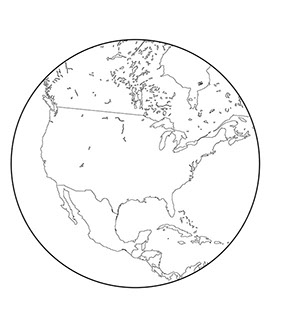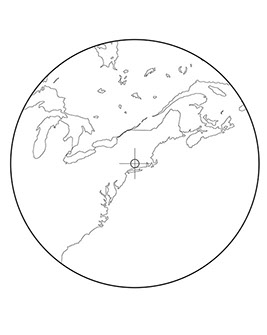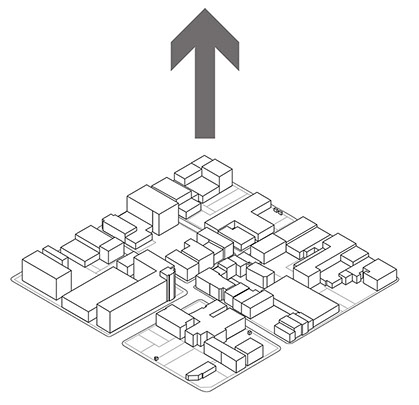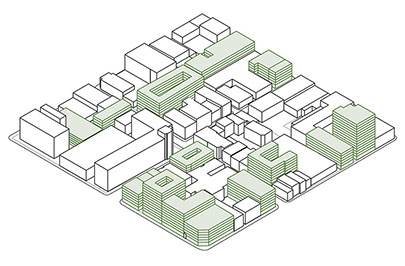Timber City is a research initiative of Gray Organschi Architecture, supported by the Hines Research Fund For Advanced Sustainability at Yale University.
By 2050, 66% of the world's population will live in cities. From what materials will those cities be built?



6,300,000,000
120,000,000
110,000
The United Nations predicts that in 2050, 6.3 billion people will live in urban areas around the world. As the global rural population is expected to decrease from its current peak, the world will need to build enough urban dwellings to accommodate 2.9 billion people.
According to projections from the US Census Bureau, an additional 120 million people will live in the United States in 2050 than in 2014. This is equivalent to adding the entire population of Mexico to the United States. Based on current trends, the majority of this growth will occur in urban areas.
The city of New Haven, Connecticut, a typical mid-sized American city, is projected to add nearly 110,000 people to its urban population by 2050, nearly doubling the size of the city in only 35 years.
Timber City proposes a radical pivot from construction practices that have dominated North American cities for over a century: instead of utilizing steel or concrete, the architecture of the future city might be harvested from trees.
Mass timber structural systems, and the sustainable forestry practices and material science that underlie them, promise a new synergy between dense cities, healthy forests, and a thriving industrial economy based in wood.
Timber City transforms urban areas from sources of C02 into carbon sinks
3210 TONNES C02
EMISSIONS
Typical concrete and steel mid-rise building

Resource extraction
Carbon emissions
Habitat destruction
4720 TONNES C02
AVOIDANCE
Typical mass timber mid-rise building


Carbon sequestration
Emission avoidance
CO2 uptake in forest regrowth
Timber City orchestrates comprehensive, regional supply chains that span from the forest to the city
Forest Resources
Primary lumber processing
Forest product manufacturing
Transportation networks
Timber building design and construction

Sustainably managed forest lands located proximate to urban population centers produce the raw materials for the city, creating jobs and economic activity in rural areas
Sawmills located near forest resources are optimized for producing dimensional lumber from a wide variety of timber sizes and grades, ideal raw products for advanced, secondary manufacturing processes
Industrial manufacturing facilities specializing in the production of value-added, glue-laminated mass timber products, such as LVL, glulam, NLT, and CLT
By matching regional forest resources with nearby urban centers, transportation networks critical to the forest products industry become more efficient and productive
An integrated approach to designing and constructing mass timber buildings allows for construction timelines that are dramatically shorter and significantly more efficient than standard building practices
Timber City proposes a closer, healthier, and more sustainable relationship between the city and the forest

™ 2016 Gray Organschi Architecture